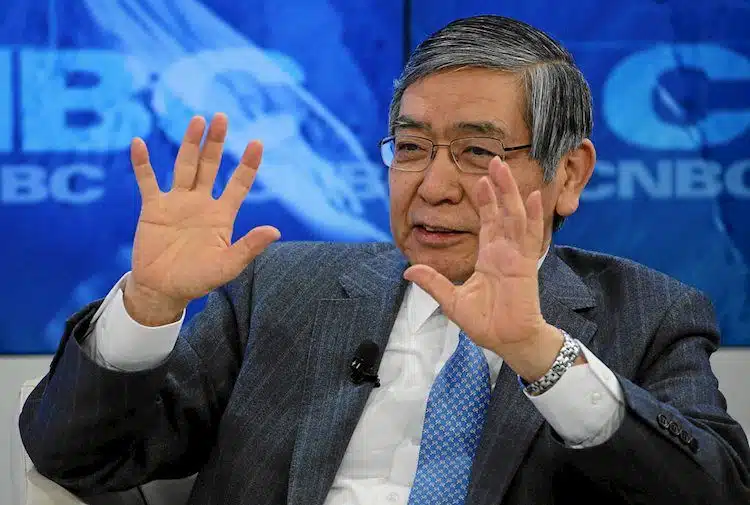Bank of Japan Governor Haruhiko Kuroda recently attended the Bank for International Settlements (BIS) meeting. During the meeting, a discussion was held on the collapse of SVB and its impact on global markets. Kuroda stated that officials at the BIS meeting were relieved to see swift action taken by US authorities to contain the damage caused by SVB collapse.
Regarding monetary policy, Kuroda shared that the BoJ must maintain its current monetary easing policy. However, he also acknowledged the need to consider steps to address the side effects of the easy policy. He maintains that by sustaining an easy policy, the BoJ can achieve a sustainable and stable price target, and wage growth while still taking care of the side effects of the policy. Furthermore, he stated that the BoJ will exit the easy policy when the 2% inflation target is sustainably achieved, and they have the ability to do so.
Kuroda also shared his thoughts on the decision to adopt a negative rate policy in January 2016. He stated that while he felt most board members were in favor of the idea, some thought it was premature to do so at that time. He also expressed his expectations that the market function would improve with the existing market tools steps taken, despite it taking some time.
Monetary Policy and the Economy
Monetary policy is the economic policy set by the central banks of countries. This policy involves using various tools that the central bank has at its disposal to control the money supply in the economy. The most common tool used to achieve this is the adjustment of interest rates. By adjusting interest rates, central banks can influence the borrowing and lending behavior of banks and affect the economy.
The Bank of Japan’s Monetary Policy
The Bank of Japan is one such central bank that uses monetary policy to control the Japanese economy. The BoJ’s monetary policy framework has been in a state of flux since the 1990s, to deal with problems that the economy has faced. The economy has endured several reasons for change in monetary policy, such as inflation, deflation, and interest rates. However, the BoJ has been focusing more on monetary easing policy in recent years.
The BoJ’s monetary easing policies have involved the use of a range of tools that have been implemented concurrently. Some of these tools include increased bond purchases, introducing negative interest rates, expanding loan programs, and capping short term interest rates. These policies were designed to increase liquidity in the market and improve lending conditions in the economy. The aim was for businesses to invest more, households to consume more, and ultimately for the economy to pick up the pace of growth.
The Outcome of BoJ’s Monetary Policy
The BoJ’s monetary policy aimed at achieving inflation targets of 2%, but this has been difficult to achieve over the years. Despite implementing these policies, inflation remained stagnant, hovering around 0.5% for most of the time. Wage growth has been modest, and the overall economic growth has been relatively slow.
Critics of the BoJ’s monetary policy argue that the BoJ has created an addictive policy that has failed to generate the desired outcome. Additionally, they suggest that the BoJ is running out of options on how to stimulate the economy further. Critics argue that a new approach to monetary policy is essential to boost the economy.
The Way Forward
In light of the above, it is evident that the BoJ has its work cut out for it. The country has been battling a range of issues, such as low inflation, low economic growth, and stagnant wages. The prolonged pandemic has only added to these issues, making it difficult for the BoJ to predict and manage economic outcomes.
The current monetary policy framework may have helped address some issues in the economy, such as improving lending conditions. Still, it has failed to achieve the overall target of 2% inflation. The BoJ has also been accused of creating a policy that has led to fewer options available for improvement.
The way forward for the BoJ could involve moving away from the current policy framework to something new. This new framework could involve a blend of both monetary and fiscal policy. Fiscal policy could involve government spending and taxes, while monetary policy could involve interest rate adjustments, bond purchases, and other tools available to the BoJ.
Conclusion
In conclusion, the BoJ’s monetary policy has focused predominantly on monetary easing in recent years. However, critics argue that the policy has not achieved its targets and, instead, has created a policy that has limited further options for stimulating the economy. The way forward for the BoJ could involve combining monetary and fiscal policies to achieve a sustainable inflation target and economic growth rate. Such a policy would require a delicate balance, and the effectiveness of such policies will depend on BoJ’s ability to navigate financial and economic landscape successfully.


